Andy Extance learns how the chemicals in food and drink create sensual culinary experiences
-
Understanding mouthfeel: Mouthfeel, the tactile sensation of food and drink in the mouth, is a crucial but often overlooked component of flavor. It includes sensations like astringency, which is the drying or puckering feeling experienced with certain foods and drinks like red wine and tea.
-
Chemical interactions: Mouthfeel is influenced by the interaction of chemical components in food and drink, such as proteins, fats, and sugars. For example, astringent compounds like tannic acid in wine bind with saliva proteins, reducing lubrication and increasing friction, which enhances the sensation of dryness.
-
Sensory sensitivity: Sensitivity to mouthfeel varies among individuals. Studies show that people with higher sensitivity to rough textures tend to enjoy more astringent foods. This sensitivity is linked to the mechanoreceptors in the tongue, which are highly sensitive to texture.
-
Applications in food science: Understanding mouthfeel can improve the sensory experience of food. For instance, researchers are working on plant-based meat alternatives that mimic the mouthfeel of real meat by studying the structure and water content of plant proteins. Additionally, the role of fat in chocolate and ice cream is crucial for achieving the desired mouthfeel and overall enjoyment.
This summary was generated by AI and checked by a human editor
To experience the phenomenon known as mouthfeel, you could try this experiment – perhaps over the festive season. Swig some red wine and swish it around. Rub your tongue against the roof of your mouth. You should experience a drying, ‘puckering’ or ‘roughing’ sensation, known as astringency. Do you enjoy it? It’s often considered a positive part of the flavour of wine and coffee, notes Christopher Simons from Ohio State University. Astringency is an ‘interesting sensation that a lot of people aren’t familiar with’, Simons says.
Astringency is an example of mouthfeel, the least-known component of flavour. Taste and smell are the two most obvious. You can tell smell’s importance by tasting two different brands of cola while holding your nose, explains Alissa Nolden from the University of Massachusetts Amherst, US, then again after releasing it. You should find that their taste is the same while you hold your nose, she says. But after you release it, you find their smell makes their flavours different.
Another way to experience astringency might be a comparison experiment with red and white wine, Nolden suggests. This time you should hold your nose and close your eyes, before trying one glass of each. Even if the taste is similar, you should still be able to distinguish them, because of red wine’s astringent mouthfeel.

Many of us know and think little about mouthfeel, which is strange, considering we experience the sensation many times every day. But scientists closely study the role it plays in how our senses perceive flavour. Many home experiments can illustrate the underlying principles, but getting a detailed understanding at times involves bizarre-sounding studies. Their results have shown that sometimes just a few small molecules cause mouthfeel sensations. Mostly, mouthfeel originates from how the main chemical components of food and drink, like protein, fat and sugar, combine. Using these findings can enhance the pleasure we get from food. Focusing on them as we eat and drink can even send us on enjoyable sensory journeys.
A food or drink’s texture mostly determines its mouthfeel. But counterintuitively, scientists’ understanding of how our mouths feel texture is largely based on what we know about our hands. The skin in both areas is hair-free, or glabrous, and contains similar nerve fibres. ‘For a long time, we thought that the fingertips were the most sensitive tactile detectors on our body,’ Simons says. But more recently his and other labs have found that ‘the tongue tip is exquisitely sensitive, even more sensitive than the fingertips’, he adds.
Simons says that Yalda Moayedi’s Columbia University team has shown that this is because the tongue’s nerves are organised slightly differently. They also contain different mechanoreceptor proteins that detect movement in structures on our tongue called papillae. Astringency most likely happens when the way that saliva lubricates our mouths changes, influencing how these systems detect texture. Saliva’s not just water: it also contains proteins such as mucins – the same class of lubricating substances that snails make – that have high levels of the amino acid proline.
Some like it rough
Astringent compounds, including polyphenols like tannic acid found in wine and tea, bind proline-rich saliva proteins together. Scientists think that plants make these substances as natural chemical defences against microbial attack and being eaten. The proteins form clumps and come out of the saliva, leaving what remains less viscous and lubricating. That increases friction between surfaces in our mouths, stimulating mechanoreceptors and causing drying or roughing feelings. There’s a close similarity to just sensing rough objects in our mouths, a similarity that Simons tested by asking people to lick metal bars.
Simons and then Ohio State colleague Brianne Linne studied how mechanoreceptors that detect roughness contribute to astringency. They measured a group of volunteers’ sensitivity to roughness by asking them to lick metal bars roughened to different degrees. Simons calls the fact the volunteers could distinguish the bars using their tongues ‘remarkable’ because by hand ‘you don’t really feel any difference’.
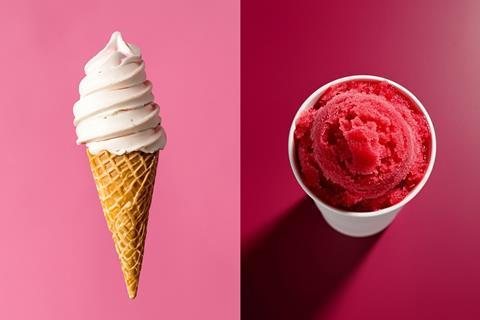
Linne and Simons separated the volunteers into groups of high and low sensitivity to roughness. They gave them tannic acid and another astringent polyphenol called epigallocatechin gallate, also found in tea. They found that those with higher roughness sensitivity were also more sensitive to epigallocatechin gallate, but not tannic acid. The high-sensitivity group also liked more astringent foods like unripe bananas and dark chocolate more than those with low roughness sensitivity.
Sometimes, chemical substances trigger mouthfeel sensations directly, for example the fizzy drinks you might enjoy at a festive celebration. You might think that the sensation of drinking champagne originates from bubbles bursting. But that only plays a minor role, as shown by two doctors who celebrated climbing a mountain by drinking beer. One had taken a drug to stop altitude sickness. Called acetazolamide, the drug inhibits the enzyme carbonic anhydrase, which converts carbon dioxide and water into bicarbonate and hydrogen ions, via carbonic acid. For climbers, blocking the enzyme helps them breathe more oxygen. But the doctor taking the drug also couldn’t taste the beer’s fizziness. The same was true of a fizzy soft drink, but whisky tasted normal.
20 years later, scientists found that taste buds that detect sour flavours also have receptors that detect carbon dioxide using a carbonic anhydrase enzyme. This might help explain if the climbing doctor only thought his beer tasted funny, but that would be a different sensation to the fizzy tingle. Other studies have also found that blocking carbonic anhydrase enzymes reduces the feeling of fizz. They show that carbon dioxide can pass through cell membranes. Inside the cell, carbonic anhydrase converts carbon dioxide to carbonic acid. Transient receptor potential (TRP) cation channels, particularly the protein TRPA1, then detect the carbonic acid, triggering a tingly nerve signal, the experiments suggest.
Choosy chewers
At Christmas in Nolden’s house, these proteins will be busy helping adults enjoy mimosas, cocktails made of equal parts orange juice and sparkling wine. And Nolden’s family may have experienced astringency a month earlier, in the form of cranberry sauce, which is commonly served in the US at Thanksgiving. The common US form juices cranberries, mixes them with a lot of sugar, and then cans them, Nolden explains. This results in a thick jelly with a very astringent and tart flavour profile, balanced by the added sugar. This makes cranberry sauce a divisive holiday dish. ‘It is a very unique texture experience that if you aren’t used to it is very odd,’ says Nolden.
Among those who may not enjoy cranberry sauce are Nolden’s two young children, who are sensitive to food texture. At Christmas, she avoids giving them slimy foods, with better-received options including sweet baked goods like cinnamon buns.
Like constructing a house, finding the right building blocks is key
Physical texture is the primary driver of food dislike in picky eaters, explains Simons. That’s particularly true for children, who often avoid soft, slimy textures, he says. For example, it’s common for children to dislike potatoes when mashed but to enjoy them in other forms. The mouthfeel originating from texture is also a big part of the flavour of meat-based main courses many people enjoy over the festive period. It partly arises from the structure of meat protein, fat and other substances. Replicating the experience with lower-carbon footprint plant-based alternatives is therefore challenging. Yet that’s what Mario Martinez from the University of Aarhus in Denmark, wants to do.
Martinez, who investigates the very large macromolecules in plants, notes that plant-based burgers from companies like Beyond Meat and Impossible Foods replicate traditional meat burgers relatively successfully. However, mimicking whole muscle cuts, as his team wants to do, is much more challenging. Large molecules like proteins and carbohydrates and their interaction with other components including water give food its structure. ‘Like constructing a house, finding the right building blocks is key,’ Martinez says. For example, people sometimes find plant-based meats dry, or excessively soft, and therefore less enjoyable. ‘With meat, we need more chews,’ Martinez says. One reason is that plant proteins form balls, not fibres like meat, something the Aarhus team wants to overcome.
Working with Aarhus colleague Niki Alexi, Martinez’s team has also found that animal-based meat tends to contain more freely available water than plant-based alternatives. That’s important because the water distribution correlates with mouthfeelings of undissolved particles and mouthcoating. But the tendency varies between plants, with some being more like meat in how they store water and form fibrous structures. Hemp- and pumpkin-based products can feel like dense meats, such as pork or veal, for example. This could help ‘elevate the number of chews needed’, Martinez says.
Frictional character
The festive menu for Anwesha Sarkar from the University of Leeds, will be largely plant-based. It might include a curry made with green vegetables like spinach and ‘a bit of pungency and heat’. She researches the texture of food and drink from the perspective of tribology, which is the study of friction, lubrication and wear. The mouthfeel of a curry’s heat mainly comes from compounds like capsaicin in chili peppers activating TRPV1 ion channels, and sending nerve signals to our brains. But Sarkar is really curious about the direct tactile sensations they cause. ‘Friction generates heat, as seen when rubbing hands in winter, but I wonder how this oral friction occurs, relating to the effects of spices on a dish,’ she says.
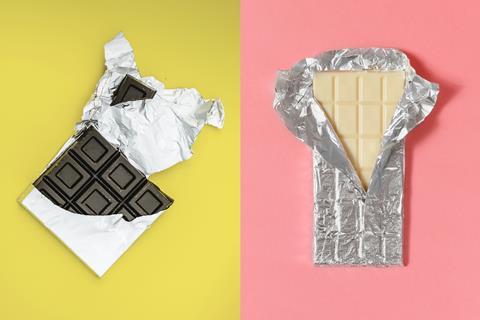
TRPV1 can also detect gingerols in ginger and piperine in black pepper. TRPA1, which helps detect carbon dioxide bubbles, can also trigger burning nerve sensations. For example, it responds to substances like allyl isothiocyanate, found in horseradish sauce that is sometimes served with roast beef. Nolden notes that such sensations are technically considered chemesthesis, which warns us about potentially harmful chemicals. Yet people often approach her to ask how to build up their tolerance to the burning sensation. She suggests putting a single drop of hot sauce on a cracker and eating it each day, gradually increasing the amount over several weeks. Nolden’s bemused by the question, however. ‘I should talk to them more about why they’re interested in doing that,’ she admits.
Sarkar’s team can study the tribology of chili in our mouths, because it has developed a 3D biomimetic tongue. Working with the university’s school of dentistry, they took moulds of 15 people’s tongues to work out the shapes, sizes and locations of features like papillae. They also studied how soft and deformable pigs’ tongues are, and how easily liquids spread across them, a process called wetting, information they couldn’t measure directly in a human’s mouth. Sarkar then used this information to create a faithful silicone rubber tongue mimic, with which her team can measure food’s friction and lubrication properties. Like it would be for most people, an ‘edible phase change material’ was higher on the team’s list of research priorities than chilli – that material being chocolate.
The Leeds team used the biomimetic tongue to study how our mouths lubricate the process of eating chocolate. That process involves chocolate changing from solid to molten states, to a phase mixed with saliva, in this case a model solution containing pig mucins and other substances. They discovered that fat is crucial in providing lubrication and giving a pleasant mouthfeel in the initial phase of eating chocolate. As the chocolate mixes into an emulsion with saliva, fat content becomes less important for lubrication. The ideal chocolate would therefore have more fat on the surface to enhance the initial mouthfeel, but less in the centre, Sarkar explains. That could potentially lower the amount of fat needed to reach the ‘bliss point’, the recipe that people find most delicious.
Sweet mouthfeels
Elke Scholten from Wageningen University in the Netherlands says that fat is important to mouthfeel in potentially any foodstuff. It provides a fuller, smoother feeling overall. ‘Although the role of the fat is not always the same, it’s often related to positive sensory attributes,’ she explains. ‘It normally makes [food] smooth, thick, creamy or rich.’ In solid chocolate, fat provides the defining hardness and ‘snap’, breaking at the right moment with the perfect sound, Scholten explains. Then as it melts, the smooth creaminess emerges. Without the right fat composition, chocolate could become waxy or too hard, she explains.
The Wageningen team has studied the role of the size of particles of sugar and cocoa on properties like how viscous melted chocolate is. Large sugar particles make chocolate grainy, Scholten says. Sugar can also make chocolate stickier, in combination with saliva, which ‘glues the sugar particles together’, she explains.
People think that sorbets are just colder, but they come out of the same freezer!
To experience the roles of fat and sugar, Scholten suggests comparing white and dark chocolate, taking your time to enjoy a piece of each. White chocolate contains mainly fat and sugar, she says, so it tends to feel stickier and creamier in our mouths. Dark chocolate, with more cocoa particles, tends to be drier and less sticky.
Fat and sugar also contribute to the deliciousness of ice cream through mouthfeel, the Wageningen team has shown through experiments on its viscosity, hardness and tribology. Sugar determines the number and size of ice crystals in the ice cream and provides viscosity to the unfrozen part. ‘It’s the glue that keeps everything together,’ Scholten explains. ‘When you make ice cream, all the sugar goes into the unfrozen water. You turn it into a very thick sugar syrup that holds everything together. Making ice cream without sugar is impossible, because you make a brick of ice, it becomes very hard.’
Fat, meanwhile, can introduce more air into the ice cream, making it fluffier, and slow its melting. That’s something you can test by comparing ice cream and sorbet. Being water-and-sugar based, sorbet inherently doesn’t contain fat. As well as tasting creamier, ice cream also feels warmer because in melting slower it extracts less heat from our mouths, Scholten explains. ‘People think that sorbets are just colder, but they come out of the same freezer, so that cannot be the case.’
Knowing how common chemicals like fat, protein and sugar, capsaicin, carbon dioxide and polyphenols contribute to different mouthfeels, we can now pay them closer attention. Sarkar explains that, even if we each like certain mouthfeels, the preference probably won’t be consistent across everything we consume in our festive meals. ‘What we like in wine, we will not like in a cream or in a dessert,’ she says. Whatever we’re eating, thinking about mouthfeel offers a chance for a moment of enjoyment. ‘Every food has its own charm,’ says Sarkar.
Andy Extance is a science writer based in Exeter, UK




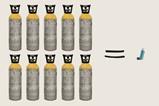






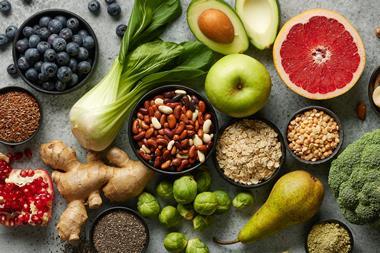




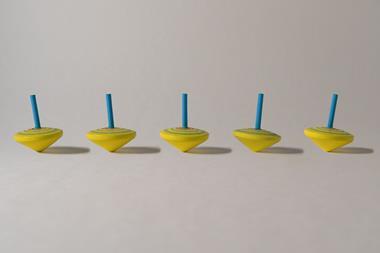

No comments yet